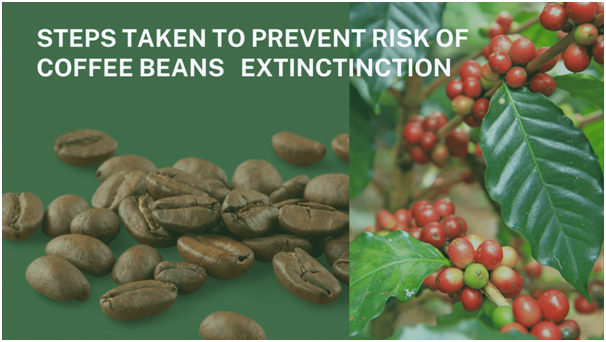Coffee is one of the most ubiquitous beverages in the world. It is consumed in homes, offices, and cafes across the world every day. In fact, it is estimated that over 400 billion cups of coffee are consumed each year globally. Coffee is so popular that it has been estimated that 25% of all land across the world is used for the cultivation of coffee crops. But the industry is facing huge challenges from climate changes that could threaten its future.
Here’s what the industry is doing about it.

Most current methods of picking coffee beans involve either sheer manpower or the use of machinery. Unfortunately, both of these methods have serious flaws that may ultimately damage the coffee bean quality.
An alternative method of picking coffee beans has been developed in recent years and is gaining in popularity amongst farmers who have recognized the benefits of using this technique. With the mechanical bean harvesting machine, farmers are able to reap the rewards of a considerably higher yield and improve the quality of their product without spending a fortune on machinery.
The Two-Step Process: How Does Mechanical Bean Harvesting Work?
Mechanical bean harvesting is a two-step process. The first step is to use a bean harvester to remove the beans from the tree, or in this case the bush. The bean harvester gathers all the ripe beans from the trees and then transports them to where the next stage of the process takes place.
The second step is where the main benefit of a mechanical bean harvester occurs – the so-called dry mill. The dry mill separates the beans from the pods and removes the husks and stems from the beans before they are bagged for delivery to the farmer.
One particularly interesting aspect of the mechanical bean harvesting process is that both steps are carried out in one pass. This means that there is no need for human labor to unload and reload the harvester and the beans are transported straight to the dry mill without being touched by human hands.
What Exactly Is The All-In-One System?
The All-In-One system is exactly what its name suggests – a system where the wet and dry steps are combined so that there is no need to transport the beans to another stage in the process.
The benefits of this are obvious – less time wasted transporting beans between stages means a higher yield and better quality beans finished and delivered at the optimum time.
An inspection at the beginning of this process will take place to ensure that only ripe beans are picked and that the plant is in good health. Once this inspection has been carried out, the harvester will collect all the ripe beans from the plant and transport them to the dry mill where the process will begin to separate the beans from their pods and husks.
As the beans are cleaned of the outer husks and stems, they will be collected and transported to the next stage of production where they are graded and sold.
What Are The Benefits?
The benefits of using the mechanical bean harvesting system are many and varied. Aside from the obvious savings of time and transport costs, this system means that fewer of the ripest beans are lost as in traditional methods of bean harvesting where human hands must remove the ripe and unripe beans from the plant.
Another benefit of this system is the time it takes the produce to be readied for sale. The mechanical bean harvesting machine is able to clean the beans and remove all the stalks and husks in a single pass meaning the product is ready for sale much faster.
It is also believed that dried beans picked by the machine have a higher nutritional value than those picked by hand as they have not been exposed to as much air or contaminants.
The mechanical bean harvesting machine has, therefore, become a firm favorite amongst coffee growers around the world and the All-In-One system is fast becoming a standard method of producing top-quality coffee beans.
Tackling Climate Change And Diseases
Coffee beans that are at risk of extinction due to disease, climate change, or deforestation will soon be grown in remote jungle areas as part of an ambitious project by the Rainforest Alliance.
The alliance, which works with coffee farmers to improve standards, is hoping to regenerate coffee farms in three countries: Guatemala, Colombia and Indonesia. All three countries have suffered from the effects of coffee rust, caused by the fungus Hemileia vastatrix or rust fungus as it is usually known, which has devastated the coffee plantations and affected the livelihoods of many local workers.
The coffee rust fungus thrives in areas with damp conditions and in hot climates and is spread by the wind or by the movement of people and equipment across the plantations and farms. Since its discovery in Africa in 1892, it has spread rapidly throughout the world and is now present in over 60 countries, causing an estimated $1 billion a year in losses for coffee farmers.
With the establishment of tree nurseries in Guatemala, Colombia, and Indonesia, the Rainforest Alliance hopes to replace smallholders currently affected by coffee rust and encourage new farmers to come into the business. The Alliance has installed training facilities in each country to teach local farmers how to grow coffee in a sustainable way and is helping them to improve the quality of their harvests and collaborate with other farmers to share knowledge and ideas.
To sum up, coffee is one of the most important crops in the world and is traded and consumed in vast quantities across the world every day. Its future depends on our ability to tackle climate change and stop the destruction of its natural habitats to produce top-quality beans for years to come.




